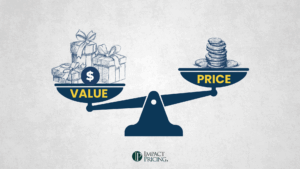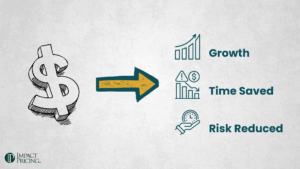A question from a reader:
G’day Mark, A question for your newsletter (which I love, BTW): how do you determine value & price points where the number of deals is very low? For example, a B2B business, with 2 new customers closing per month and a 9-month sales cycle. I hope you’re safe and enjoying making an impact – I can vouch that the pricing course I attended certainly had an impact on me 🙂 Cheers, A
Hi A, thanks for the question. Surprisingly, I’m going to give you the same answer I would give a company that has many transactions per month. Know how your buyers perceive the VALUE of your solution. The only advantages companies with many transactions have over you is they have more buyers to learn from and the ability to test their findings more rapidly.
So, how do you learn customer perceived value? Ask them. You can’t ask that question and expect a good answer. They probably don’t even know. But you can ask a series of questions that helps both of you learn.
First, were they making a “Will I” or a “Which One” decision? Since you’ve been in my course, you know this means did they consider a competitive alternative or not. If not, then value is the inherent value of solving the problem. If they did, then value is the relative value of your product compared to an alternative. Think of relative value as what problems you can solve that the competitor’s product can’t.
As you can see in the previous paragraph, in both inherent and relative value the buyer cares about the value of solving a problem. Inherent value is the reason for buying any product like yours. Relative value is the reason for choosing your product over a competitor. But both start with problems.
Once you are clear on the problems, you can measure the result of solving the problem. Instead of measuring though, you may simply want to ask what they expect the result to be. Finally, you should use business acumen to help them determine how much additional profit their company will make if they achieve those results. Problem – Result – Value.
There are many more details on how to do this in my latest book, Selling Value, How to Win More Deals at Higher Prices. Rest assured, if you learn to do this, you will be far ahead of your competitors. If you need help, reach out to me.
Now, go make an Impact!
Tags: pricing, value















